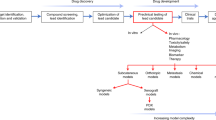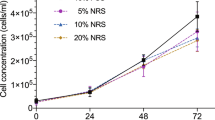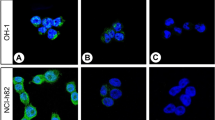Abstract
AN antigen in malignant and embryonic tissues capable of retarding the growth of a transplantable human tumour (HS1) in rats has recently been described by Buttle et al.1. Seven days after injecting a variety of human tumours and normal adult and fœtal human tissues into weanling rats, they challenged the animals with HS1 and cortisone. Significant inhibition of tumour growth was produced by prior injection of homogenates of HS1, sarcomata and a variety of normal fœtal tissues, especially spleen, whereas normal adult plasma and muscle had little if any effect. Buttle et al. attributed these findings to a labile antigen, destroyed by freezing and thawing, present in high concentration in embryonic and malignant tissue, and related to a high rate of cellular division in those tissues.
This is a preview of subscription content, access via your institution
Access options
Subscribe to this journal
Receive 51 print issues and online access
$199.00 per year
only $3.90 per issue
Buy this article
- Purchase on Springer Link
- Instant access to full article PDF
Prices may be subject to local taxes which are calculated during checkout
Similar content being viewed by others
References
Buttle, G. A. H., Eperon, J. L., and Kovacs, E., Nature, 194, 780 (1962).
Stein-Werblowsky, R., Nature, 186, 980 (1960).
Author information
Authors and Affiliations
Rights and permissions
About this article
Cite this article
WYNN, R., STEIN-WERBLOWSKY, R. & AMOROSO, E. Growth of Transplantable Cancer in Rats previously injected with Placental Tissue. Nature 197, 606–607 (1963). https://doi.org/10.1038/197606a0
Issue Date:
DOI: https://doi.org/10.1038/197606a0
Comments
By submitting a comment you agree to abide by our Terms and Community Guidelines. If you find something abusive or that does not comply with our terms or guidelines please flag it as inappropriate.



